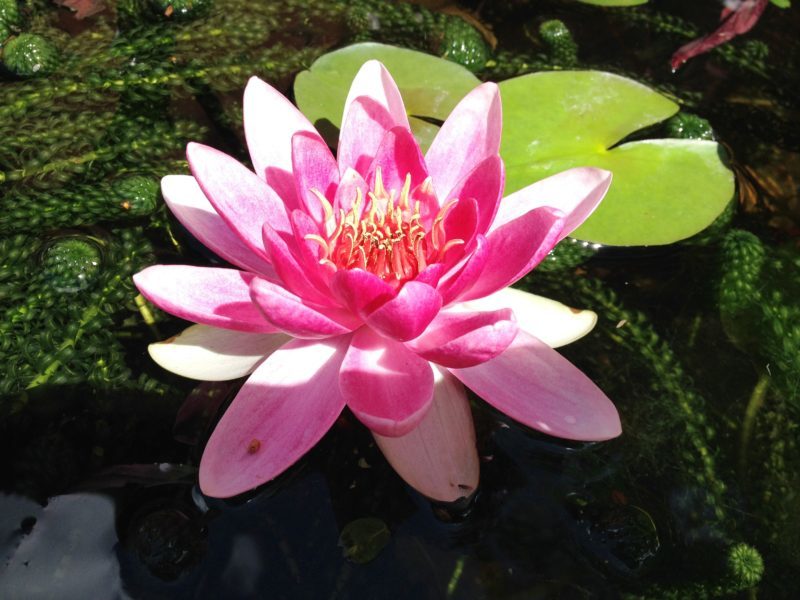
Pond keepers often face the hugely common problem of algae. Fortunately it’s a problem that can be overcome. This blog post will help with pond care by differentiating between the two predominant types of algae and discussing the best ways to get rid of them.
Most pond keepers will either experience one of two types of algae. The first is referred to as “Green water” which is thousands of microscopic algae cells floating about the water which gives the water a green colour. The second is filamentous algae which is often referred to as blanketweed.
Like pond plants, algae thrives in an environment with lots of sunlight and nutrients in the water. Algae feeds on nutrients that are produced by organic matter such as leaves decaying at the bottom of the pond.
There are many algae treatments on the market which ultimately treat the symptom (the algae itself) but not the cause of it, which is the high nutrient load in the water. These can act as a great quick fix to get your pond looking good. We recommend the tetra algofin which we have in store. However it is also important to deal with the root of the problem to prevent the problem recurring.
The key to an algae free pond is to ensure regular seasonal maintenance is carried out.
 Autumn- Cut back any “leggy” plants and any dead leaves on your pond plants. If you are lucky enough to own a pond vacuum then this is the time use it. This will remove any unwanted sediment from the bottom of the pond. It is also important to net the pond. Doing this prevents any falling leaves falling into the pond; these will become a food source (nutrient) for algae in the spring when the water temperatures increase.
Autumn- Cut back any “leggy” plants and any dead leaves on your pond plants. If you are lucky enough to own a pond vacuum then this is the time use it. This will remove any unwanted sediment from the bottom of the pond. It is also important to net the pond. Doing this prevents any falling leaves falling into the pond; these will become a food source (nutrient) for algae in the spring when the water temperatures increase.Preferably fill up your pond with rain water from a water butt. This water is a better temperature and has less nutrients for the algae to feed on. If you are filling a pond (with fish) from the tap then do this gradually. This is becasuse the cold water can shock and harm the fish. Alternatively, fill a bucket and leave it to warm in the sun before pouring it into the pond.
Be sure to leave anything that you remove from the pond on the edge for around 24 hours> This allows any trapped creatures inside the matter to return to their habitat. To make sure smaller creatures can escape we suggest rinsing the weeds in a bucket.